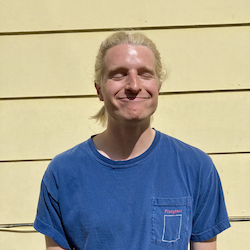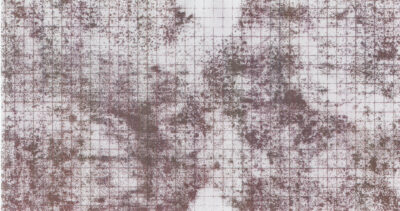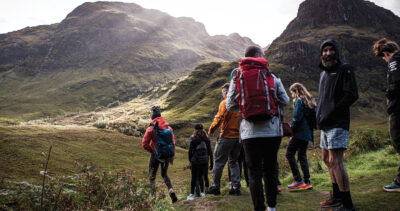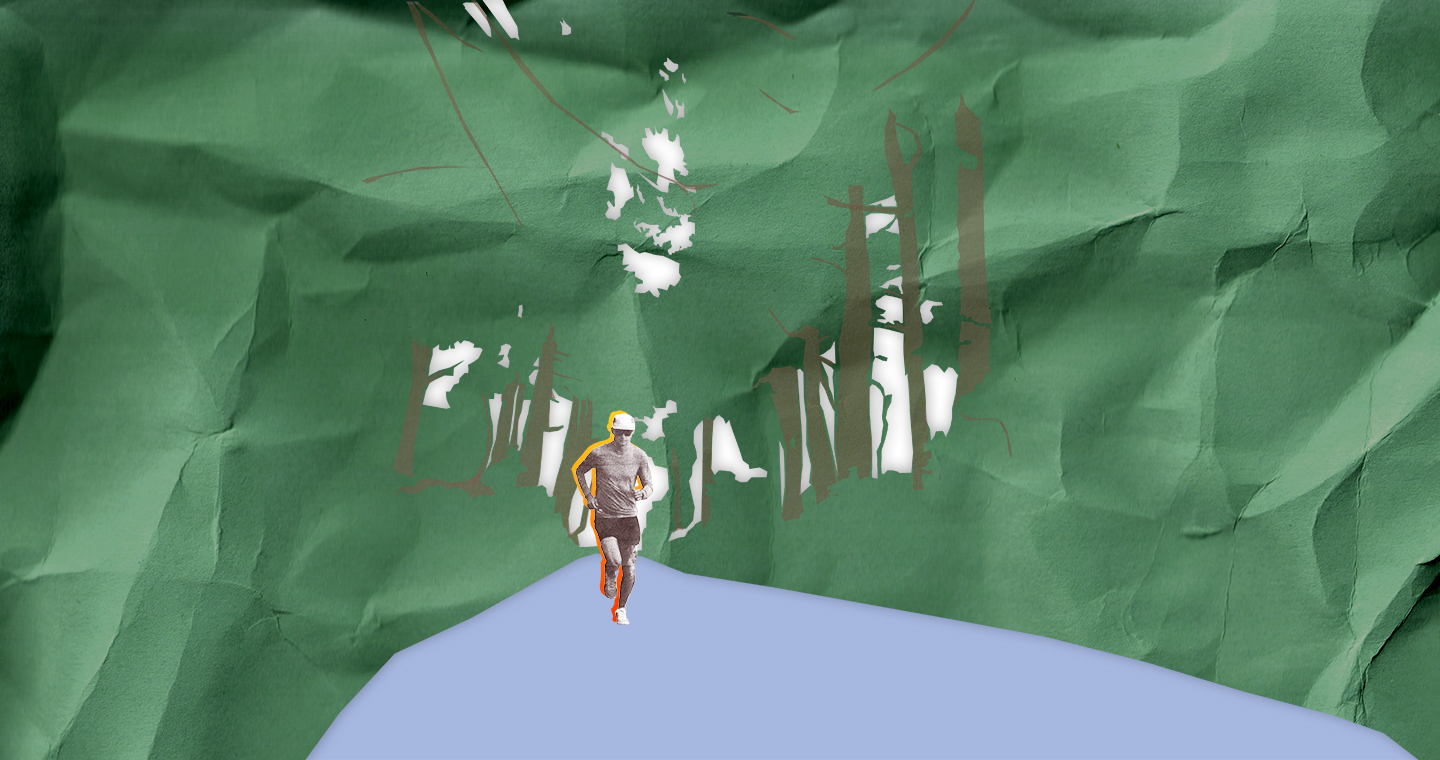
the green tunnel
the green tunnel
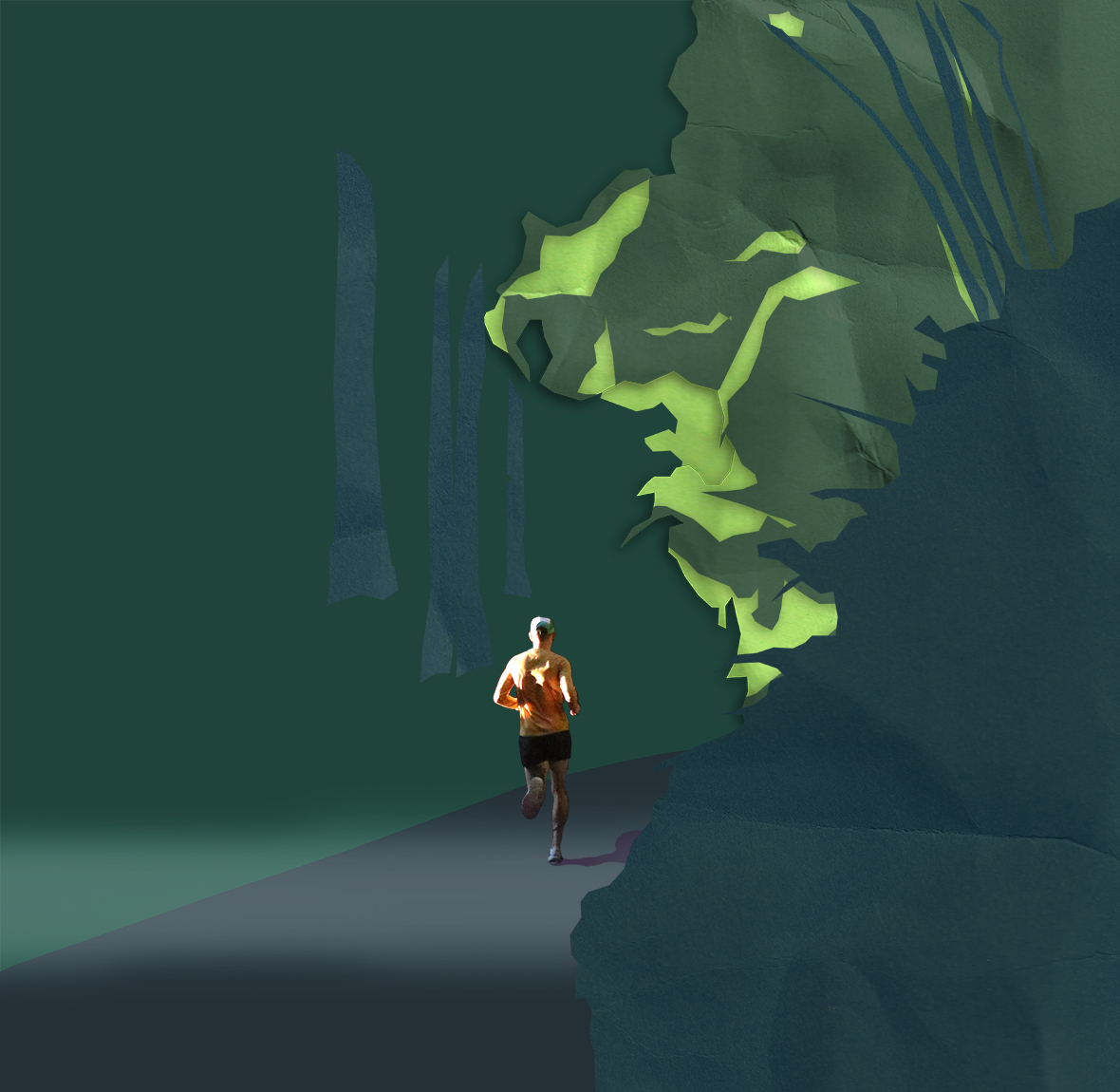
words x
north bennett
illustrations x
melanie garcia
If often you run through woods or the thickets of your own tangled imagination, then likely you know the green tunnel. It is lush on either side and complicated, with arching limbs that reach overhead to meet one another and enclose you. The sides of the tunnel are thick with tall trees, ferns, and stiff bushes, but through the middle there is a trail, clear and unobstructed, and along that trail moves your striding body, taking in its gifts. It is not often that the world furnishes such a clear path for you, and yet here you are, on it.
I first learned of the green tunnel as a child, and then it described a real piece of geography: it was what runners called the Interurban Trail, which began in my home city of Bellingham, Washington, and traveled south from it, out through the old woods along the bay. On its eastern flank rose the glacier-worn Chuckanut Mountains, and to the west sank the waters of the Salish Sea. The trail stretched ten kilometers in one direction, and was flat for much of its length. It was once a railroad line, but had become popular among hikers and bikers. Its defining feature, though, was the fact of itself: that it was a path enclosed by trees.
There have been times in my life when I have lived away from dense woods, and always I have longed to return to them.
I first learned of the green tunnel as a child, and then it described a real piece of geography: it was what runners called the Interurban Trail, which began in my home city of Bellingham, Washington, and traveled south from it, out through the old woods along the bay. On its eastern flank rose the glacier-worn Chuckanut Mountains, and to the west sank the waters of the Salish Sea. The trail stretched ten kilometers in one direction, and was flat for much of its length. It was once a railroad line, but had become popular among hikers and bikers. Its defining feature, though, was the fact of itself: that it was a path enclosed by trees.
There have been times in my life when I have lived away from dense woods, and always I have longed to return to them.
in a high valley in montana, I often felt exposed on my runs, as if the world was expansive and uncontained, and my path was just a dice-roll through it.
When I moved to a small town in the lentil fields of Idaho’s panhandle, I experienced a similar sensation. Running on rolling country roads, I would feel as if the landscape were swirling around me, as if my place in it could not easily be pinned down. It seemed possible to run anywhere at any time, but also likely that none of those ways would furnish a clear path for me.
A few times a week, I would duck into the nearby university’s arboretum, which was planted by geographic region, with representative mini-forests from all around the world. I felt attracted to one stand of trees in particular, and when I stopped to look more closely, I realized that I was among the trees of my childhood: Douglas firs and western red cedars. It was the densest forest in the whole preserve, and the one that formed an arc most like my familiar green tunnel. I wanted it to continue on indefinitely, but would run out of it in less than a minute.
In winter, I signed up for a fifty kilometer race that started and ended its course with ten kilometers on the Interurban Trail.
A few times a week, I would duck into the nearby university’s arboretum, which was planted by geographic region, with representative mini-forests from all around the world. I felt attracted to one stand of trees in particular, and when I stopped to look more closely, I realized that I was among the trees of my childhood: Douglas firs and western red cedars. It was the densest forest in the whole preserve, and the one that formed an arc most like my familiar green tunnel. I wanted it to continue on indefinitely, but would run out of it in less than a minute.
In winter, I signed up for a fifty kilometer race that started and ended its course with ten kilometers on the Interurban Trail.
the middle thirty kilometers—which were the race’s claim to fame, and also where its outcome was most often decided—spun through steep, technical singletrack, but as I trained my focus regularly drew me elsewhere, into the green tunnel.
I would be running smoothly and at speed. The finish line would be out of sight but imminent, and I would be focused, determined, moving like an arrow shot right into the middle of a target, my outcome inevitable. I could stretch the tunnel for miles, but it would never open into something else. Indeed, in my mind, I never finished the race.
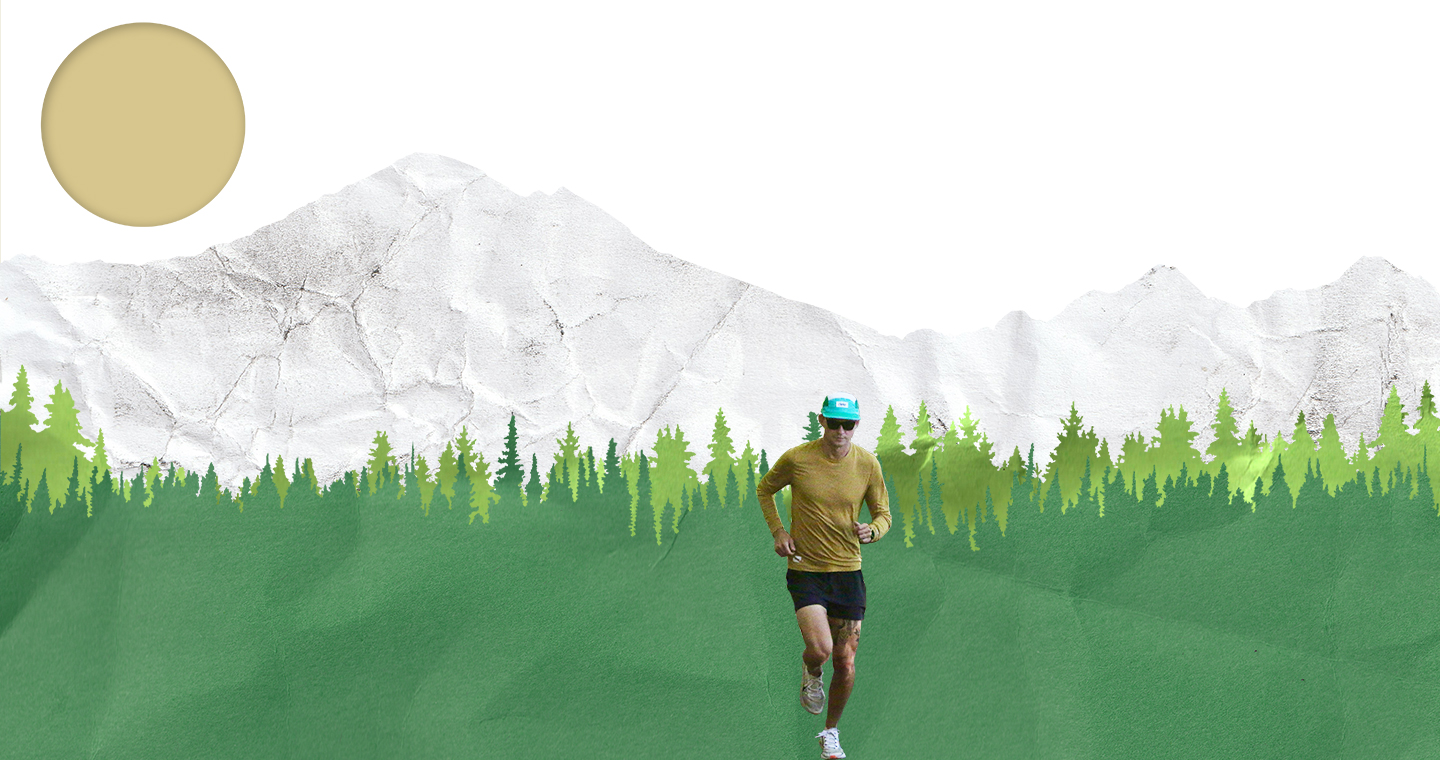
One morning, at the peak of my training, I woke up early and set out on a solo marathon through the agricultural fields surrounding my small town. It was dark, and cold, and I ran alone, improvising an arbitrary loop that I hoped would be long enough to suit my training needs. The miles ticked by slowly, and I was having trouble collecting myself. My mind kept returning to resentments, small ailments, or other things that I could have been doing, such as sleeping, or reading, or living in a place with better winter trail running. However, as fatigue winnowed my thoughts, I was able to imagine that the fallow fields and frozen pavement were instead the part of the course that most transfixed me. I dropped into the green tunnel, which had become the place I entered whenever I most sought focus, when I needed to channel my energy toward some particular purpose.
the texture of the green tunnel—its side-eye complexity, its big-enough enclosure—gave me a sense of progress and speed, and, at pace, what once seemed like a wall of obstructions blurred around me and into the periphery.
The green tunnel is a dynamo. It will pull you forward, and it did: soon, my apartment appeared and my training run was done.
The next day, I woke up with an injury. What had been a twanging annoyance in my upper hamstring had become a sharp pain that flared with each foot-strike. I tried to stretch and massage it, but couldn’t get it to loosen up. I took a week off from running, and then two and three. I filled my training time with visits to the arboretum, where I would wander off the trail and under branches, and then get lost between trunks. Often, I would find myself at the foot of a Giant Sequoia, whose length I would trace to the sky with my eyes. My vision would sway with its upper branches, and I would stand there transfixed, forgetful of running and my ambitions, unsteady in my indirection. Suddenly, the race was only a few days away.
I decided to give it a try. The morning of the race, I woke up with the Talking Heads’ “Road to Nowhere” marching through my head. It could not be stopped. I watched the music video over breakfast, and the song continued through my warm-up. By the time the gun went off, it seemed to have taken control of my stride. I was a suited David Byrne loping to the beat, some extra dragging an accordion up an incline in Sisyphean style. I went out as fast as I’d planned to run before the injury. The rhythm of the lyrics propelled me. I didn’t know what to make of their meaning.
The next day, I woke up with an injury. What had been a twanging annoyance in my upper hamstring had become a sharp pain that flared with each foot-strike. I tried to stretch and massage it, but couldn’t get it to loosen up. I took a week off from running, and then two and three. I filled my training time with visits to the arboretum, where I would wander off the trail and under branches, and then get lost between trunks. Often, I would find myself at the foot of a Giant Sequoia, whose length I would trace to the sky with my eyes. My vision would sway with its upper branches, and I would stand there transfixed, forgetful of running and my ambitions, unsteady in my indirection. Suddenly, the race was only a few days away.
I decided to give it a try. The morning of the race, I woke up with the Talking Heads’ “Road to Nowhere” marching through my head. It could not be stopped. I watched the music video over breakfast, and the song continued through my warm-up. By the time the gun went off, it seemed to have taken control of my stride. I was a suited David Byrne loping to the beat, some extra dragging an accordion up an incline in Sisyphean style. I went out as fast as I’d planned to run before the injury. The rhythm of the lyrics propelled me. I didn’t know what to make of their meaning.
We’re on a road to nowhere
Come on inside
Takin’ that ride to nowhere
We’ll take that ride
I’m feelin’ okay this mornin’
And you know
We’re on a road to paradise
Here we go, here we go
Come on inside
Takin’ that ride to nowhere
We’ll take that ride
I’m feelin’ okay this mornin’
And you know
We’re on a road to paradise
Here we go, here we go
As I ran, I could feel a fatigue building, but managed to keep pace through it. I cruised the first stretch of the Interurban, and then clawed my way up most of the course’s climbs. But, a little over two-thirds of the way through, at the end of a long descent, my legs suddenly deflated, became entirely unresponsive. I tried to jog, but I could barely lift my feet. I puttered on for a mile while people streamed by, but soon I could only walk. It didn’t feel hard or painful to run; it felt impossible, like the muscles in my legs had shut off. I had never felt this way before.
It soon became clear that I would not be finishing, and then something cracked open inside me. I felt like I needed to cry, but not with the heaviness of tears. I was walking through a forest. A green tunnel ran before me, and through the bare branches of the birch trees I could see Bellingham Bay glimmering, and the San Juan Mountains shining bright and white across the sound. Green moss glowed under the canopy, and the firs wore yellow garlands of sunlight.
It soon became clear that I would not be finishing, and then something cracked open inside me. I felt like I needed to cry, but not with the heaviness of tears. I was walking through a forest. A green tunnel ran before me, and through the bare branches of the birch trees I could see Bellingham Bay glimmering, and the San Juan Mountains shining bright and white across the sound. Green moss glowed under the canopy, and the firs wore yellow garlands of sunlight.
I felt as serene as a still pond, and then a thought dropped into my mind like a stone, its energy radiating outward: I am so happy to be here.
It was as simple and trite as that. I limped a mile and a half to an aid station, and then another two and a half miles down to a parking lot, where I was picked up and taken home.
In dropping out of a race, you know that you will never finish it—that’s the decision you make when you stop running. It is a past that you cannot return to, an outcome that will never come out. It is so easy to get lost in what could have been, or what you could have done. And yet, when I think of this race, I think first of the green tunnel, and wasn’t that the point all along?
In dropping out of a race, you know that you will never finish it—that’s the decision you make when you stop running. It is a past that you cannot return to, an outcome that will never come out. It is so easy to get lost in what could have been, or what you could have done. And yet, when I think of this race, I think first of the green tunnel, and wasn’t that the point all along?
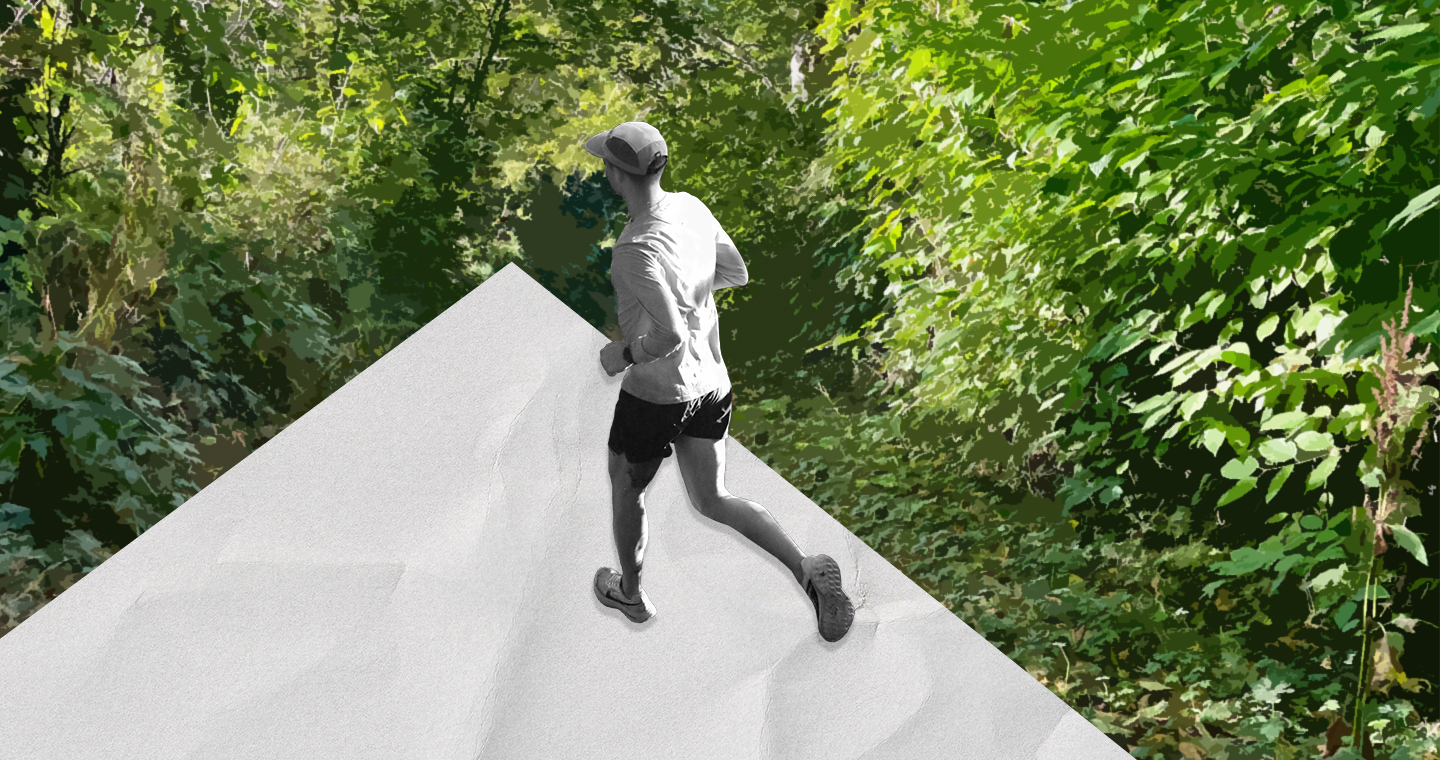
The next week, I strode into it again, this time running parallel to an old friend. My body hadn’t fully recovered yet, but my stride felt smooth enough to start, and I had enough energy to run for a while. The green tunnel stretched before me, but even as I moved forward, I couldn’t say what I was moving toward. The only hint I had were the lyrics that returned to me, my feet falling to the beat:
…it’s very far away
But it’s growing day by day
And it’s all right, baby it’s all right
But it’s growing day by day
And it’s all right, baby it’s all right
more articles


